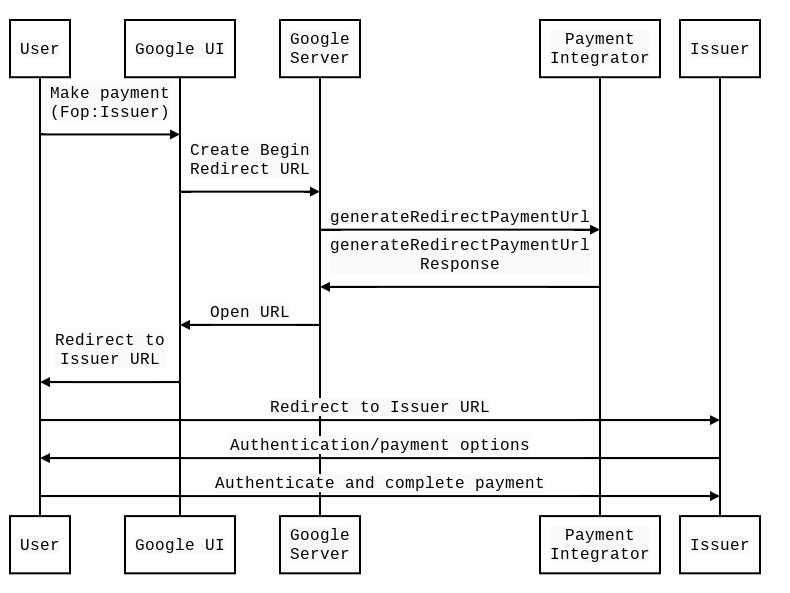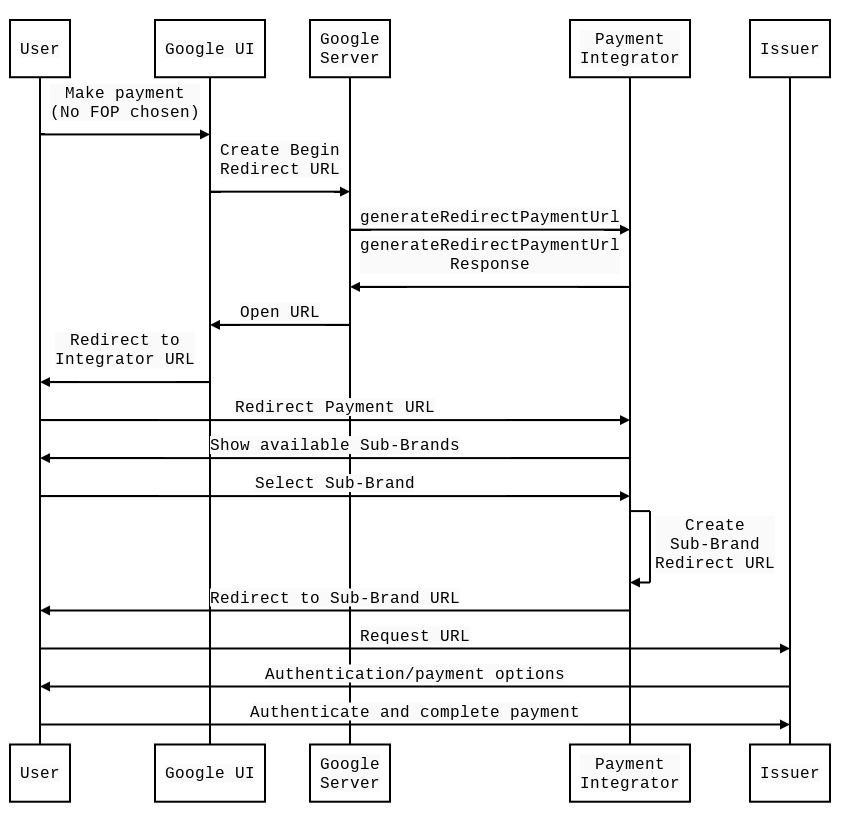Overview
The Generate Redirect Payment URL is an alternative to the Begin Redirect flow for initiating a redirect payment with the payment integrator. In this flow, Google will issue a server-to-server request to the payment integrator to get the URL the user should be redirected to at the start of the payment. Google will then redirect the user to the URL the integrator provided, which will allow the user to pay at their selected issuer, then be redirected back to Google using the Complete Redirect flow.
How the flow works
There are two ways for the user to select the issuer they will use as Form of Payment (FOP).
- User selects issuer in Google's User Interface (UI).
- User selects integrator in Google's UI, and issuer in the integrator's UI.
User selects issuer in Google's UI
In this case, the user selects an issuer during FOP selection in Google's UI, so the issuerId field of the formOfPayment object in the Generate Redirect Payment Url request will contain a Google-generated unique identifier that represents the chosen issuer. Note that if the payment integrator and the issuer are the same entity, Google will generate an issuerId for the payment integrator.
Generate Redirect Payment Url flow (issuer selected)

Here is the list of objects in the above diagram:
- User: This is the person who wants to make a payment.
- Google UI: Google's web or app interface, where the customer initiates a payment.
- Google Server: The backend server at Google that creates a redirect request.
- Payment Integrator: The integrator where the user selects an issuer.
- Issuer: The issuer where the user has an account.
For the Generate Redirect Payment Url flow, we already assume the user is on Google’s property (Google UI) and is choosing a payment method. Here is where everything starts.
- The user selects the specific issuer they want to use to make a payment. This is what triggers the Generate Redirect Payment Url flow.
- The Google UI calls the Google Server (backend) to create a new redirect request.
- The Google Server calls the payment integrator hosted GenerateRedirectPaymentUrl.
- The integrator will respond to Google with a URL to redirect the user to the issuer's website or app.
- The redirect request is sent to the Google UI.
- The Google UI redirects the user to the issuer's web interface.
- The user authenticates in the issuer's web interface.
- The user follows on-screen instructions to complete payment.
User selects integrator in Google's UI
In this case, the user selects the integrator in Google's UI, so the formOfPayment field of the Generate Redirect Payment Url will be set to noneChosen, because only issuers are considered valid FOPs. The integrator must provide a UI that allows the user to select one of the issuers that has been approved by Google.
Generate Redirect Payment Url flow (integrator selected)
The following sequence diagram shows the interaction between the user's browser, Google, the integrator, and the issuer when the user selects an integrator in Google's UI:
